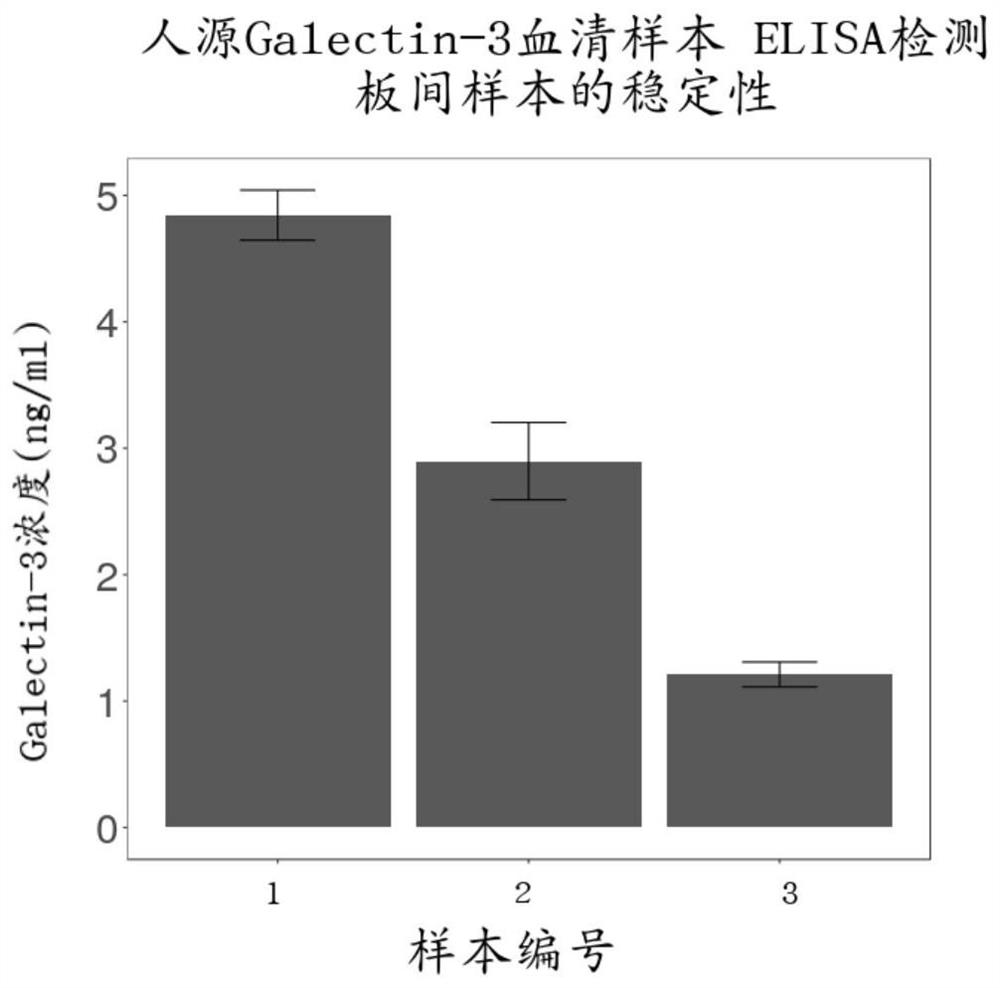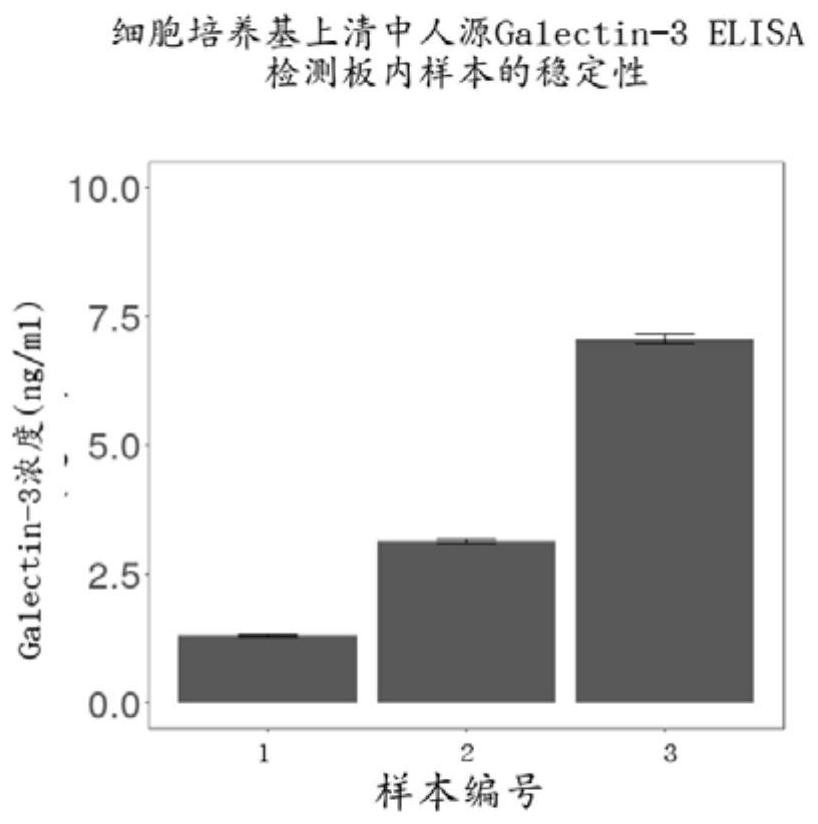ELISA fluorescence detection kit for detecting content of human Galectin-3
A fluorescence detection and kit technology, applied in the biological field, can solve problems such as large detection range, large error, and inability to obtain absorbance, and achieve the effect of eliminating reagent or operating errors and improving accuracy
- Summary
- Abstract
- Description
- Claims
- Application Information
AI Technical Summary
Problems solved by technology
Method used
Image
Examples
preparation example Construction
[0063] 1.2 Preparation of biological samples
[0064] 1.2.1 Preparation of human serum samples
[0065] Centrifuge the serum sample under the conditions of 1000g centrifugal force and centrifugation for 15 minutes, and analyze the obtained serum sample immediately; if it cannot be used immediately, the sample can be frozen and stored at -80°C. It should be noted that all blood components should be handled as potential hazards while avoiding contamination of the samples in the vials.
[0066] 1.2.2 Preparation of cell lysate samples
[0067] (1) Cultivate cells, when the cells cover more than 85% of the culture surface, wash twice with PBS, and dry the PBS;
[0068] (2) Add cell extraction buffer (Cell Extraction Buffer), the amount of cell extraction buffer depends on the amount of cells, the ratio between the two is 1×10 7 Add 1mL of cell extraction buffer to each cell, collect the cells with a cell scraper, and transfer them to a microcentrifuge tube;
[0069] (3) After ...
experiment example 1
[0072] The method for detecting Galectin-3 content in a biological sample using the ELISA fluorescence detection kit described in the composition and configuration of the ELISA kit is specifically:
[0073] (1) Place the serum samples to be tested, standard samples, and positive control samples at room temperature and pre-balance the temperature, then dilute the serum samples by half with biological sample diluent (if you encounter a sample with a very high concentration, you can carry out four One-half and one-eighth dilutions); the standard was diluted to seven gradients of 20ng / mL, 10ng / mL, 5ng / mL, 2.5ng / mL, 1.25ng / mL, 0.625ng / mL, and 0.3125ng / mL; Directly select standard diluent as negative control;
[0074] (2) Add 100uL of biological sample diluent to the microplate, add the above-mentioned samples to the microwells of the microplate in turn, and repeat the experiment twice for each sample, 50uL per well. After incubation at 25°C for 3 hours, Galectin-3 will bind to the...
experiment example 2
[0080] The method of using the ELISA fluorescence detection kit of Experimental Example 1 to detect the content of Galectin-3 in biological samples, specifically measuring the stability of the samples in the ELISA detection plate of different sources of human Galectin-3 in serum samples, cell culture medium supernatants, and cell lysates Sex, and the stability of samples between ELISA detection plates of human Galectin-3 serum samples.
[0081] 3.1 Human Galectin-3 Serum Sample ELISA Detection Panel Sample Stability
[0082] By the ELISA method of Example 2, in the same 96-well plate, the samples were detected in parallel 20 times, and the stability of the serum sample detection in the plate was obtained by calculating the mean value, standard deviation, and CV of the 20 results (such as figure 2 and Table 1), the results showed that the stability of human Galectin-3 in different serum samples in the plate was high.
[0083] Table 1 Serum sample detection stability results i...
PUM
 Login to View More
Login to View More Abstract
Description
Claims
Application Information
 Login to View More
Login to View More - R&D
- Intellectual Property
- Life Sciences
- Materials
- Tech Scout
- Unparalleled Data Quality
- Higher Quality Content
- 60% Fewer Hallucinations
Browse by: Latest US Patents, China's latest patents, Technical Efficacy Thesaurus, Application Domain, Technology Topic, Popular Technical Reports.
© 2025 PatSnap. All rights reserved.Legal|Privacy policy|Modern Slavery Act Transparency Statement|Sitemap|About US| Contact US: help@patsnap.com



